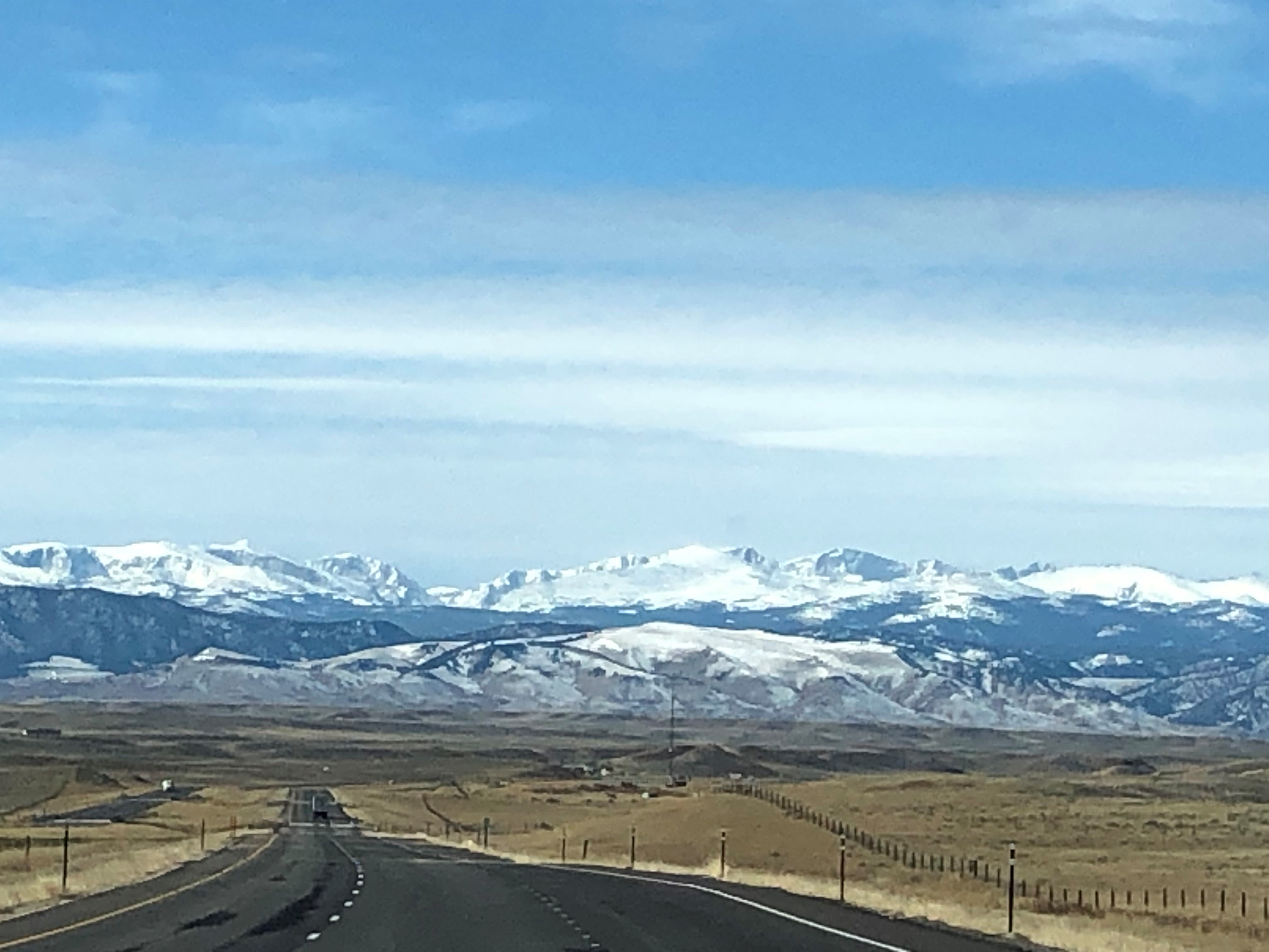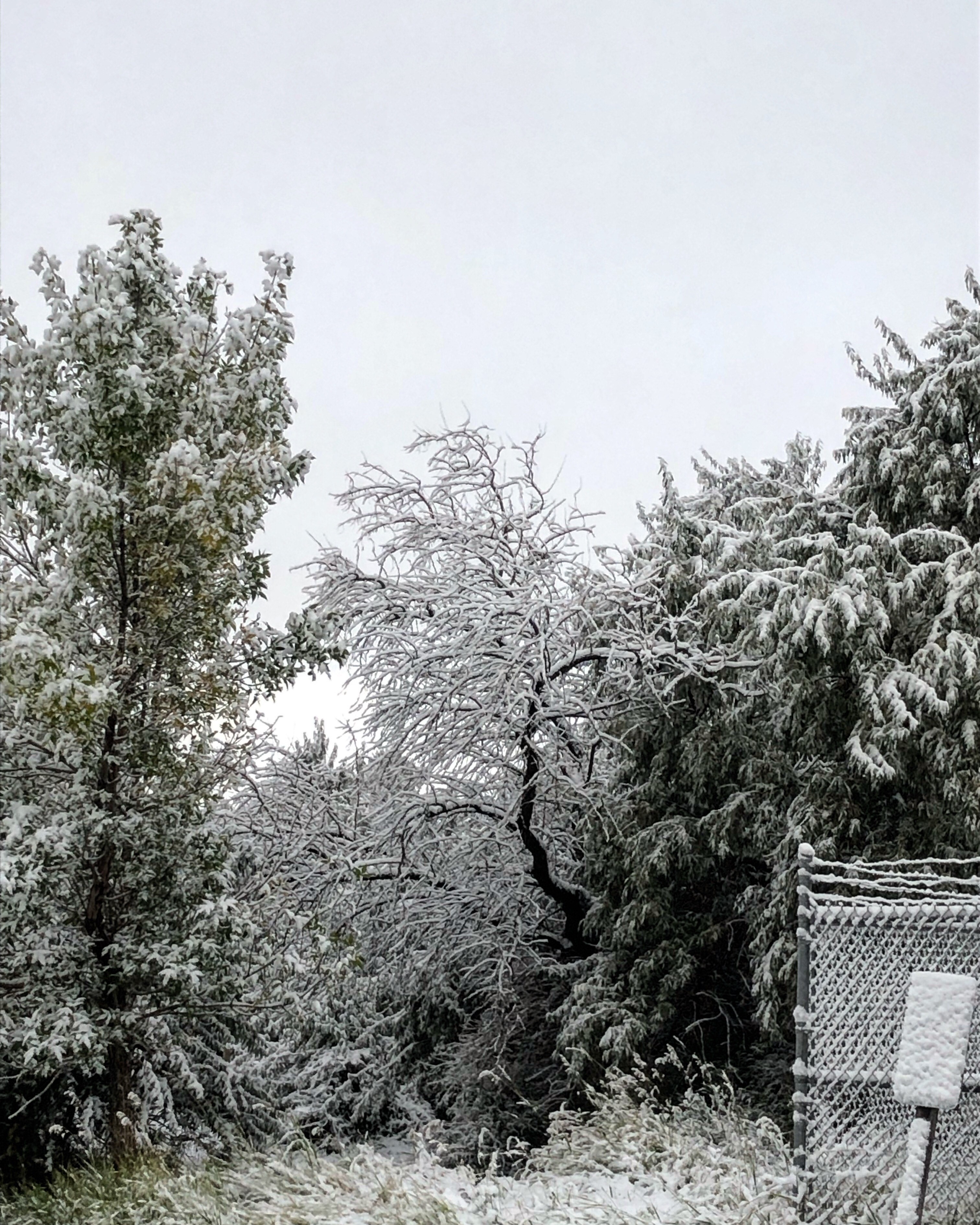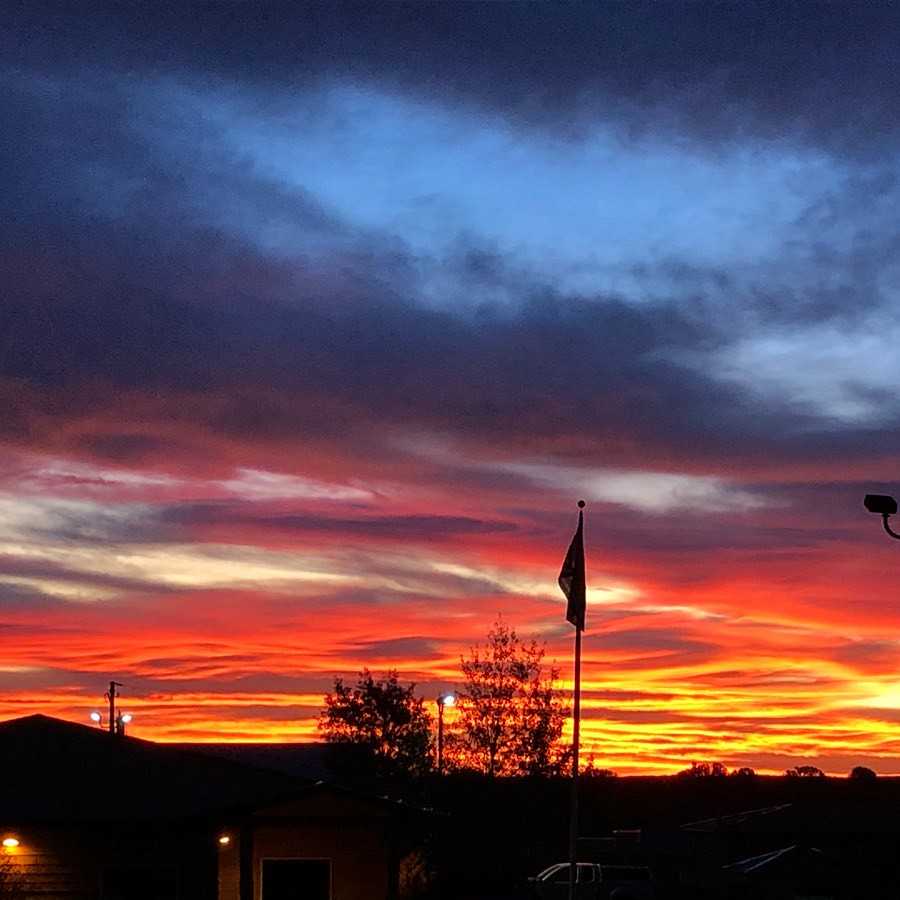Far over the Bighorn Mountains cold,
To canyons deep and forests old
We must away ere break of day
To find our long forgotten goals.
The pines were roaring on the heights
The winds were moaning in the night
The snow was wet, its flurry spread
The trees like beacons shone with light
(-The Hobbit, sort of)

Winter in Wyoming started October 1st with the first of many snowfalls. The trees experienced one blast of the icy cold and decided immediate leaf abscission was their only path forward. On multiple occasions I have been foiled going to work by ice on the hilly roads between my apartment and the office, and “oh look, the high is 5 degrees” has been a sad and somewhat frequent lamentation by my coworkers. But for all this, I will always remember my time in Wyoming for its beauty, absurdity, and the wonderful opportunities I had while working at the Buffalo BLM.

I was able to take plenty of trainings and develop many professional skills while in Wyoming. In my very first week, I learned “Defensive Driving” (and consequently how to drive a pickup truck) and was able to take an awesome NOLS wilderness medicine course through the BLM. A very long day was devoted to driving a UTV and countless online courses gave me proficiency in writing government documents such as NEPA, Visual Resource Management, and Statements of Work. I was also extremely fortunate to work with Buffalo’s hydrologist on the early stages of a river restoration project. This opened up an entire new knowledge set for me regarding fluid dynamics, elevation measurements via laser, river terms, and just being able to slog through the river in waders to collect various kinds of data. That in particular was an awesome project that I am proud to have been a part of.
There were always little moments of delight at work. Sometimes, especially in the colder months, someone would put out a jigsaw puzzle in the break room. As puzzle enthusiast, I would always take my lunches (when I was not in the field) to work on these. There were a few of us for whom this pastime was perfect, and so a little community of puzzlers formed, people with whom you would chat and eat while plopping pieces into place. Or when it got closer to Halloween, being able to take a break after finishing an office task by cutting out a construction paper bat or meandering through the halls to see the decorations in all of the different departments. This particular joy culminated in a morning of preschooler trick or treaters in the office, whom I was lucky enough to lead through the various rooms on their hunt for candy and stickers.

Professionally, my most rewarding moments were working with kids. Every time I was able to work with kids as the rec intern (which was actually fairly often) I was ecstatic. We did camps and lessons for kids ranging 6 through 16 over the course of the internship. Flower dissections with elementary and middle school students resulted in ripped up pieces of flowers everywhere while students systematically went through and described what they were seeing to me and to each other. A pollination game with first graders lead to conversations about how there are so many things that make it difficult for trees to successfully reproduce, from pollinators to weather conditions. A game focused on public lands use saw beads all over the floor and 4th grade students super excited to use their public lands passes to explore. Each of these experiences once again showed me that the work we were doing, educating the public from a young age about nature and keeping our lands safe, could really make a difference for the next generation of nature lovers and users. It also showed me that you are what you teach. Once, a few weeks after a day of educating 8th grade students about plants at a nearby campsite, I was walking through town and a few students stopped me by saying “hey, I know you! You’re the plant lady!” I think I can safely say being the one and only “plant lady” may be the highlight of my career thus far.
One thing that I did find lacking in this internship was the chances for scientific data collection and engagement. As the rec intern, there was not much need for me to collect data, beyond shuttling the traffic counters with a special tool to amass data on rec site use. I began to keenly feel this lack of science a few months into the internship, and think future interns should be aware that this job is much more focused on the physical aspects of land management (fixing fences, putting up signs, interacting with land owners) than the science that informs these management decisions. Thankfully I joined the hydrology project and spent several weeks back in my element of data collection and analysis. But without this project, this internship would have felt somewhat incomplete. In the end, perhaps this was all a good thing – I now know for certain that I do want to return to the world of academic science, at least for a time, to focus on the science helping to inform land management for the next generation of BLM policies.

During my second week, I was sent out to the Outlaw Cave campground at Middle Fork to pick up trash and do general site maintenance. The campground is located on the edge of a breathtaking canyon. As soon as I got out of the truck, I knew that if trash cleanup on this job meant visiting one of the most beautiful places in Wyoming, then I was set for this internship. During my last week, I revisited the canyon as part of a sagebrush planting crew. This time, covered with snow, the trees standing out starkly against the white of the canyon slopes, I was able to look across this view and say goodbye to this beautiful scene, this wide open place, and all of the people who helped fill my time in Wyoming with stories.

At the start 
At the end
Rec Intern, Buffalo BLM
















